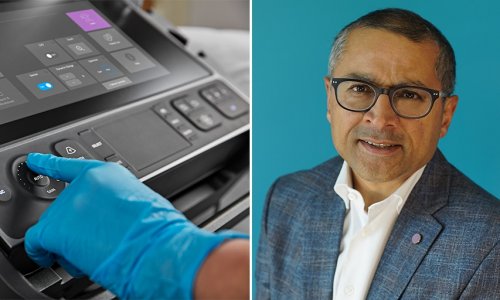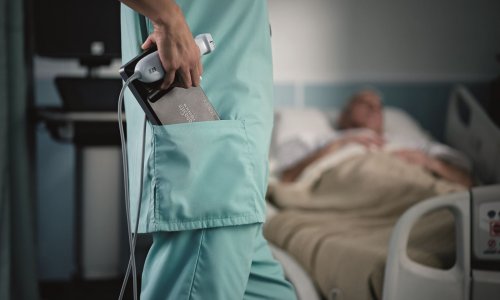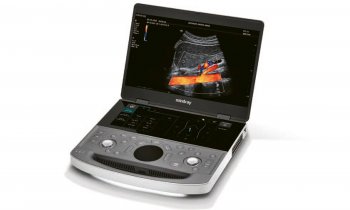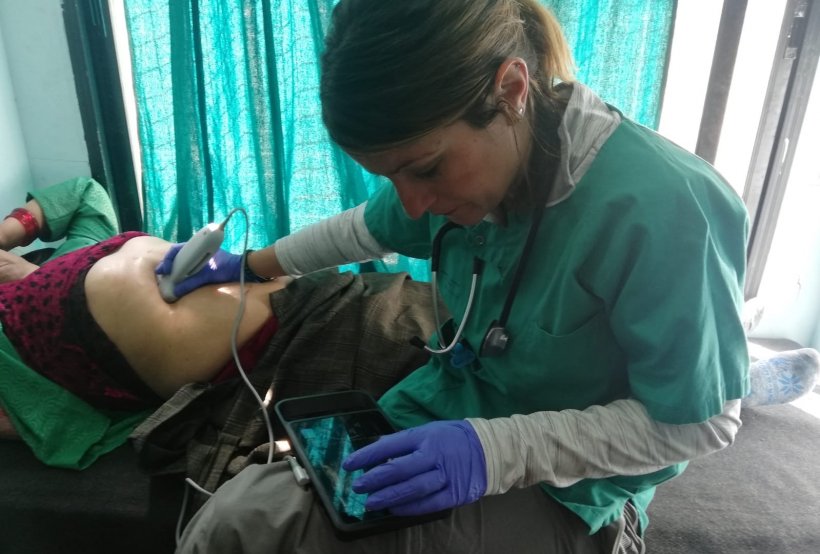
Image source: Fujifilm SonoSite
Sponsored • After the earthquake
Ultrasound provides much-needed answers for rebuilding lives in Nepal
Dr. Jesus Casado Cerrada, Internist at the Hospital Universitario de Getafe and Professor at the Universidad Europea, Madrid, Spain, has travelled to the Rasuwa district of Nepal to help a local NGO rebuild the region’s infrastructure following a severe earthquake in 2015. Dr. Casado explains:
“University colleagues from the architectural and engineering departments had already established successful projects in the village of Gatlang in Nepal. They returned from these trips saying there was a desperate need for better healthcare provision and asked if I could offer assistance. Volunteers from the local NGO informed the local community that western doctors would be coming to help, so they knew when to attend the health centre.”
Many of the medical problems faced by the local population in these recovering areas of Nepal are directly linked to living and working conditions, as Dr. Casado describes: “A lack of basic healthcare and general poor sanitation means the presenting conditions are often very complex. In particular, poor food hygiene and no refrigerators are to blame for a significant number of patients arriving with abdominal discomfort. There are also a lot of respiratory conditions as a result of inhaling fumes from cooking over open fires in poorly ventilated temporary homes. Farming in the region involves hard physical labour in harsh weather conditions, and there are frequent musculoskeletal problems caused by carrying heavy weights of wheat, rice, or firewood, as well as injuries from falling on uneven ground when doing so.”
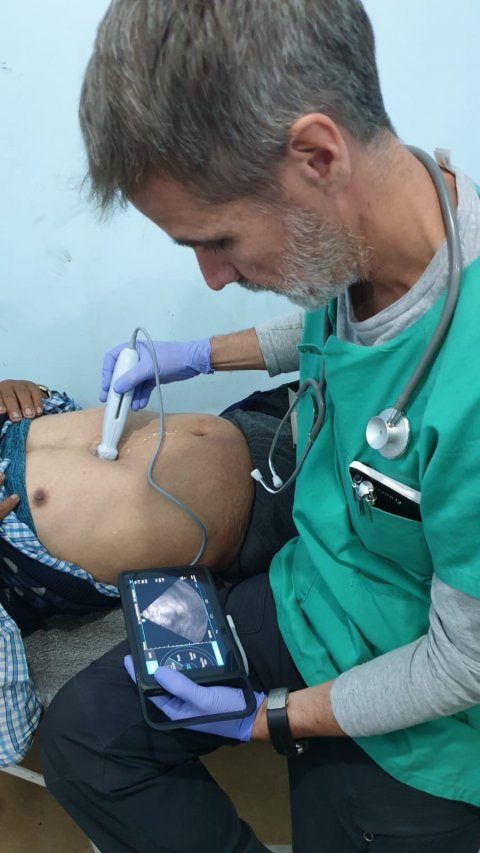
Image source: Fujifilm SonoSite
On his first trip to Gatlang, Dr. Casado discovered a health centre but no doctors or nurses. He recalls his initial impressions: “When I first arrived, I saw very little equipment, only beds. There was a gynaecological examination room and an autoclave to sterilise medical supplies, but that was basically it. There were no medications and no diagnostic equipment, such as ECGs, analysers or radiology facilities, and I knew I had to return much better prepared.”
The following year, Dr. Casado convinced his hospital in Madrid to provide all the medications he might need for his next visit, and Fujifilm SonoSite donated an iViz ultrasound system. “I knew from experience that assessing patients is really compounded by the lack of a common language. People could point to the part of the body that hurt, but it was really difficult to find out any more about their symptoms. This was when the iViz came into its own – it is small, easy to carry, and provides immediate, crucial information about what’s really going on. It also coped well with the marked changes in temperature that we experienced because, at 2,400 metres, there is huge variation between the coldest and warmest times of the day. The most common cases we saw were for abdominal pain, and the iViz allowed me to see if there were any intestinal or kidney problems, any infection or build-up of fluid.”
Having the ultrasound with us meant we could turn clinical suspicions into confirmation on the spot
Jesus Casado Cerrada
Most of the patients coming to the centre were around 50 years of age – considered elderly in this community – but, for Dr. Casado, one younger patient sticks in his mind: “A 30-year-old woman who happened to be visiting relatives in Gatlang came for a consultation. Unusually, she spoke English, and explained that she felt tired when exercising, had shortness of breath, and lately her legs had begun to swell. All these symptoms in western Europe would make us suspect heart failure, but risk factors like hypertension, diabetes, and obesity are not as common in Nepal. We could hear a systolic murmur and, when we carried out an ultrasound of the heart, we saw she had severe mitral insufficiency that was deteriorating the mitral valve. Of course, we had no medical resources to solve this problem, but were able to give her a written report to pass on to a cardiologist in Kathmandu. Having the ultrasound with us meant we could turn clinical suspicions into confirmation on the spot, and confidently point her in the right direction for the treatment she desperately needed.”
01.08.2020



